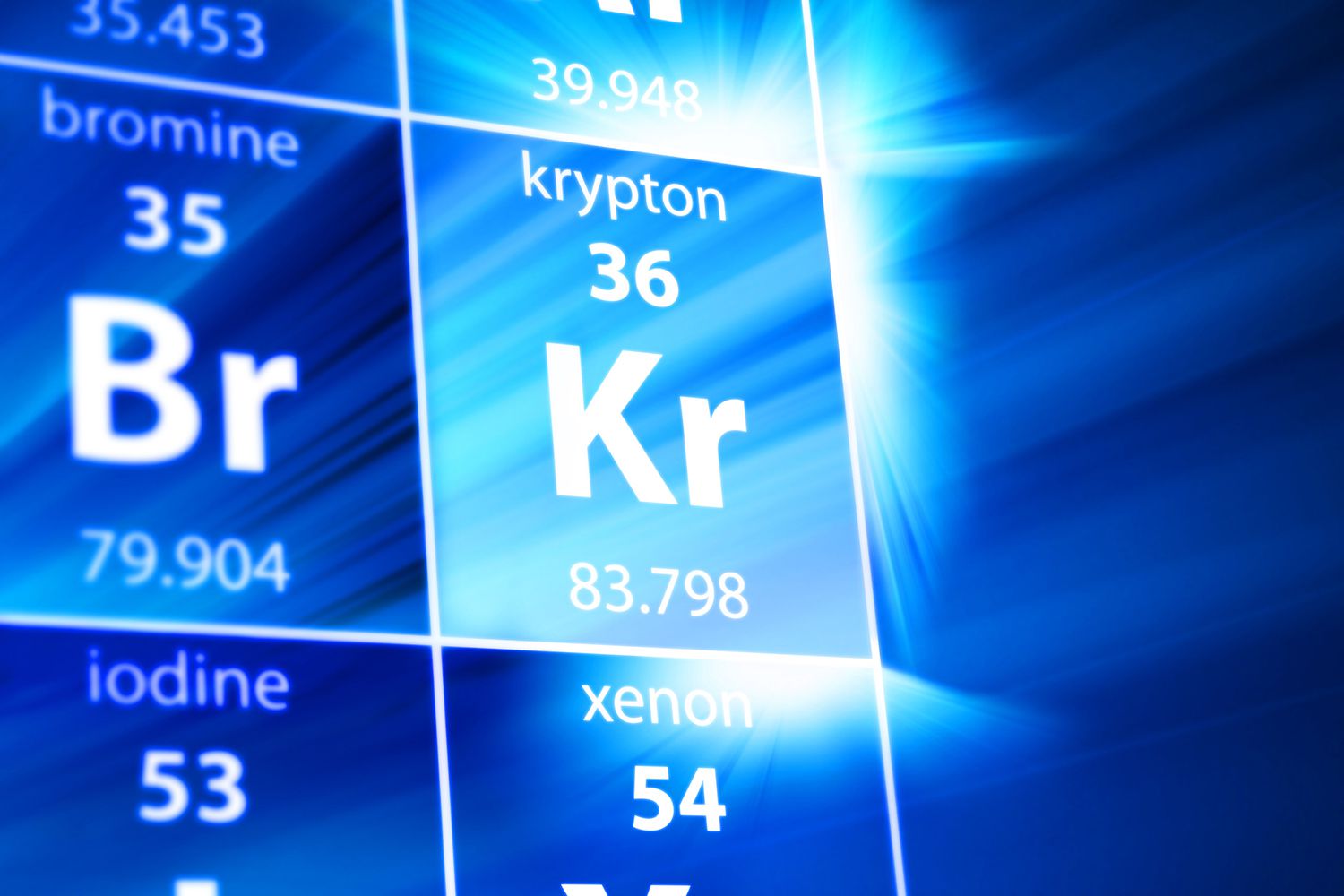
Krypton is a fascinating element that holds a significant place in the periodic table. As the noble gas with the atomic number 36, it possesses unique properties that have intrigued scientists and enthusiasts alike. From its discovery by Sir William Ramsay and Morris Travers in 1898 to its diverse applications in lighting, photography, and more, krypton has a rich and storied history. In this article, we will delve into 15 interesting facts about the enigmatic element, shedding light on its characteristics, uses, and relevance in the world of chemistry and beyond. So, let's embark on a journey to unravel the mysteries of krypton and gain a deeper understanding of this remarkable element.
Key Takeaways:
- Krypton, a noble gas, emits a cool bluish-white light and is used in high-speed photography and energy-efficient light bulbs. It’s also found in stars and has medical and industrial applications.
- Krypton, named after the Greek word for ‘hidden,’ is present in our atmosphere and has multiple stable isotopes. It’s used in dating ancient groundwater, ion thrusters, and even in advertising signs.
Krypton is a noble gas.
Krypton is a member of the noble gases group on the periodic table. These gases are known for their low reactivity and are typically found in their elemental form. Krypton is odorless, colorless, and tasteless, making it a versatile element with various applications.
Krypton emits a distinct color when used in lighting.
When an electric current is passed through krypton gas, it emits a bright, bluish-white light. This property makes it useful in certain types of lighting, such as high-speed photography strobes and some types of high-efficiency light bulbs.
Krypton is a product of supernovae.
Krypton is formed through the process of nucleosynthesis in stars, particularly during supernovae explosions. This fascinating origin adds to the allure of this element, as it is a product of the incredible forces at play in the universe.
Krypton has multiple stable isotopes.
There are six naturally occurring isotopes of krypton, making it a diverse element with various atomic structures. Each isotope has its own unique properties and applications, contributing to the versatility of krypton in different scientific and industrial fields.
Krypton has a range of industrial uses.
Due to its inert nature, krypton is utilized in various industrial applications. It is used in certain types of lasers, as an insulating gas in windows, and in the production of semiconductors. Its unique properties make it invaluable in these processes.
Krypton is present in the Earth’s atmosphere.
Although it is a relatively rare gas, krypton is present in the Earth’s atmosphere at a concentration of about 1 part per million. Its presence, albeit in small amounts, contributes to the composition of the air we breathe.
Krypton is named after the Greek word for ‘hidden.’
The name “krypton” is derived from the Greek word “kryptos,” meaning “hidden.” This name reflects the element’s tendency to exist in low concentrations and its relatively late discovery compared to other noble gases.
Krypton is used in dating ancient groundwater.
The radioactive isotope krypton-81 is utilized in dating ancient groundwater. By studying the decay of this isotope, scientists can determine the age of groundwater resources, providing valuable insights into Earth’s hydrological history.
Krypton is a potential propellant for ion thrusters.
Due to its favorable properties, krypton is being explored as a potential propellant for ion thrusters in spacecraft. These thrusters offer high efficiency and are used for long-duration space missions, showcasing the versatility of krypton in advanced technology.
Krypton has medical applications.
Krypton-81m, a radioactive isotope of krypton, is used in nuclear medicine imaging. It is employed in lung ventilation studies to assess pulmonary function, demonstrating the diverse roles that krypton plays in scientific and medical fields.
Krypton is a poor conductor of heat and electricity.
As a noble gas, krypton exhibits low conductivity for both heat and electricity. This property makes it valuable in insulating materials and certain specialized applications where minimal heat transfer is desired.
Krypton is a component of “rare gas mixtures.”
Krypton is often used in specialized gas mixtures, alongside other noble gases, for specific applications such as high-performance insulation in windows and as a filling gas in energy-saving fluorescent lights. Its inclusion in these mixtures enhances their overall properties.
Krypton is commercially extracted from liquid air.
Commercially, krypton is obtained through the separation of air using processes such as fractional distillation. This method allows for the extraction of krypton and other noble gases from the air, enabling its use in various industrial and scientific applications.
Krypton has been detected in space.
Krypton has been observed in the spectra of stars and distant galaxies, providing valuable insights into the composition of celestial bodies. Its presence in the cosmos highlights the widespread occurrence of this element beyond Earth.
Krypton has been used in advertising.
In the past, krypton has been utilized in advertising signs, particularly in “neon” signs. By combining krypton with other noble gases, manufacturers can create a range of vibrant colors for eye-catching signage and displays.
Conclusion
Krypton is a fascinating element with a rich history and diverse applications. From its discovery in 1898 to its use in lighting, photography, and medicine, krypton has proven to be an invaluable element in various industries. Its unique properties and role in the noble gas group make it a subject of ongoing research and exploration. As scientists continue to study and harness its potential, the future applications of krypton are bound to expand, offering new opportunities for innovation and advancement in technology and science.
FAQs
What is the atomic number of krypton?
The atomic number of krypton is 36, indicating the number of protons in its nucleus.
What is the symbol for krypton?
The symbol for krypton is Kr, derived from its name in Greek, which means “the hidden one.
What are the common uses of krypton?
Krypton is used in lighting, photography, and medicine. It is also employed in high-speed photography and as a filling gas for energy-efficient windows.
Is krypton a rare element?
Krypton is relatively rare in the Earth’s atmosphere, comprising about 1 part per million by volume. However, it is obtained through the process of fractional distillation of liquid air.
What are the unique properties of krypton?
Krypton is a colorless, odorless, and tasteless gas. It is inert, meaning it does not readily react with other elements, and has a high light emission, making it useful in lighting applications.
Was this page helpful?
Our commitment to delivering trustworthy and engaging content is at the heart of what we do. Each fact on our site is contributed by real users like you, bringing a wealth of diverse insights and information. To ensure the highest standards of accuracy and reliability, our dedicated editors meticulously review each submission. This process guarantees that the facts we share are not only fascinating but also credible. Trust in our commitment to quality and authenticity as you explore and learn with us.


